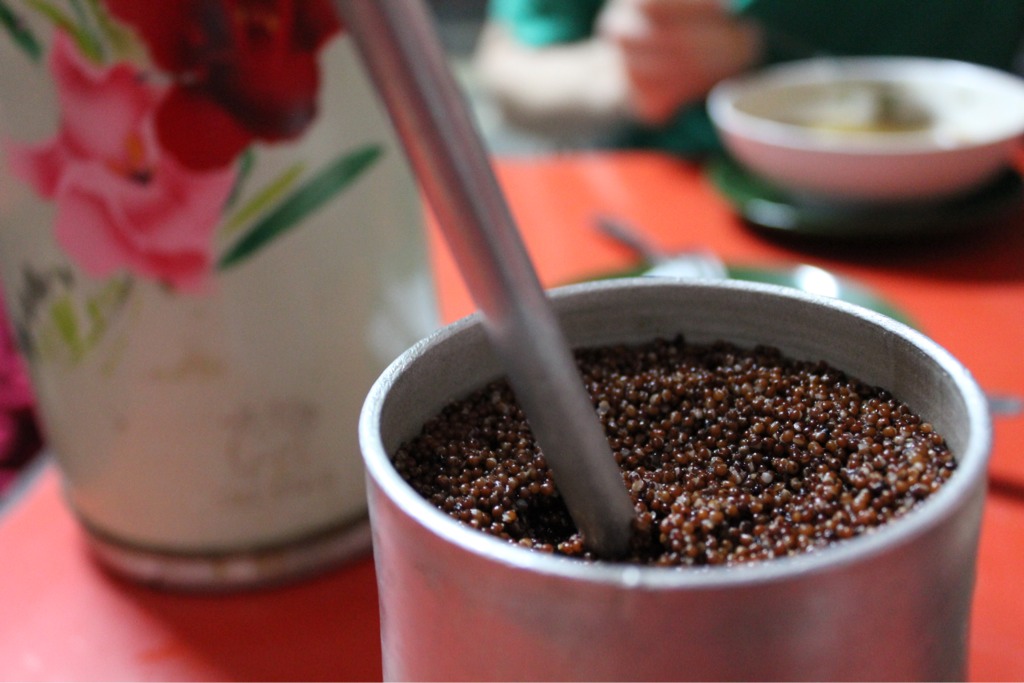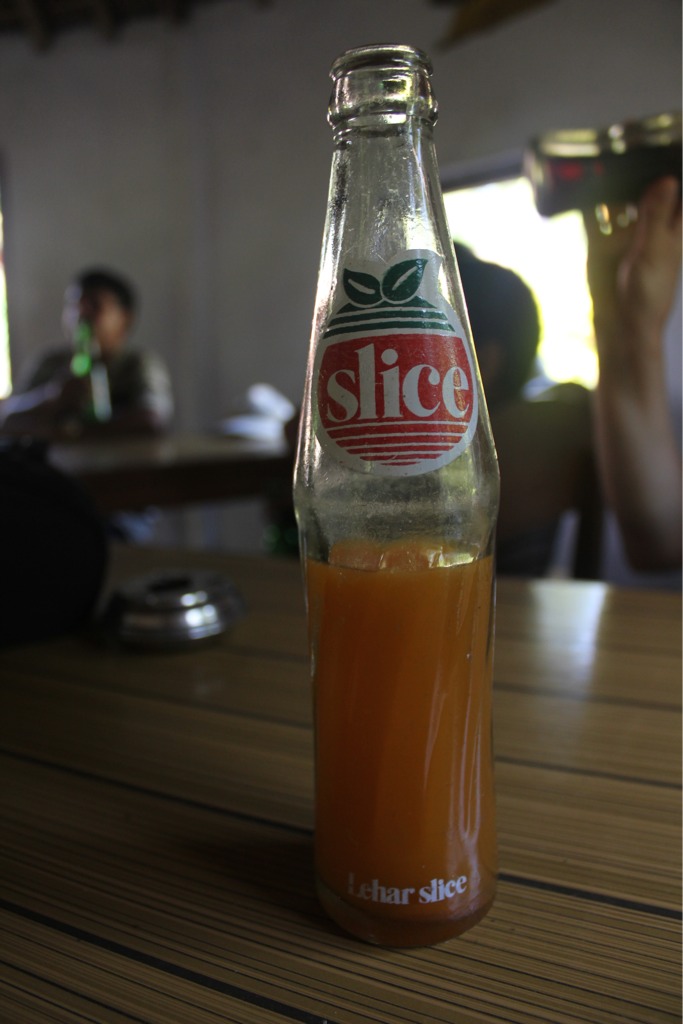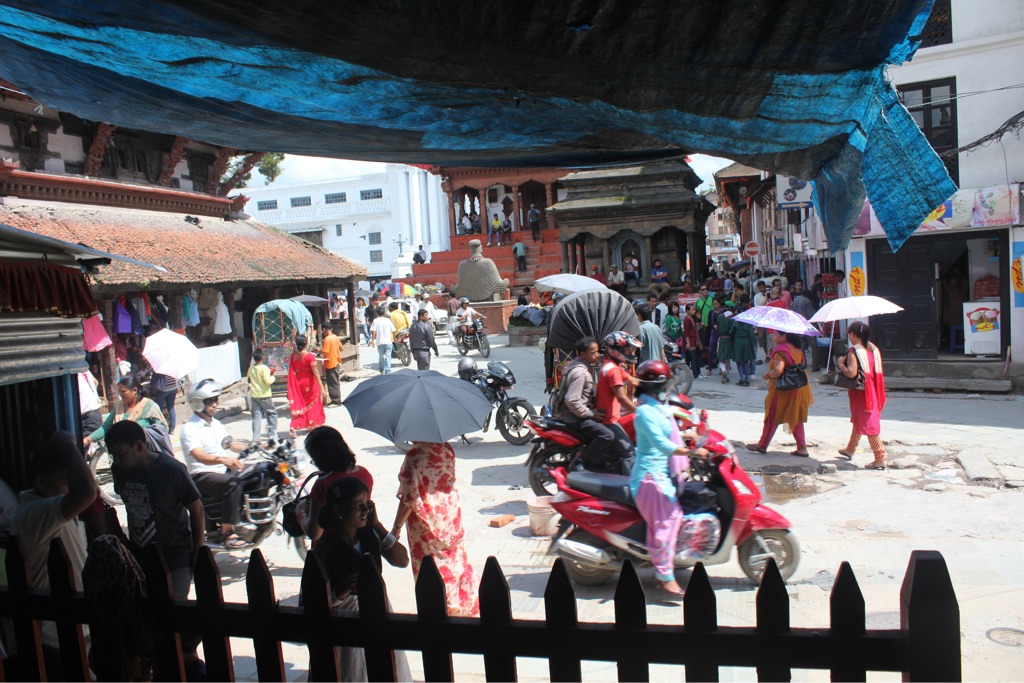 This image above seems fitting. Imagine all of the wires in a tangle being filled with people in flip flops, bicycle taxis, small car taxis, random dogs, children, tourists and the occasional bus or truck (which seem monstrous in the face of the smaller transportation around you). At your sides are mostly old, somewhat crumbly brick and wood buildings, shops lining the bases, bursting with souvenirs, cloths, tea, spices, knock-off trekking gear, real trekking gear, fabric, kitchen tools, books, and more souvenirs. There was even a place solely selling phony brand labels by the roll, all of them lined up in the window and accompanied by a "no pictures please" sign. You have officially arrived near the Thamel district of Kathmandu with us. Welcome.
This image above seems fitting. Imagine all of the wires in a tangle being filled with people in flip flops, bicycle taxis, small car taxis, random dogs, children, tourists and the occasional bus or truck (which seem monstrous in the face of the smaller transportation around you). At your sides are mostly old, somewhat crumbly brick and wood buildings, shops lining the bases, bursting with souvenirs, cloths, tea, spices, knock-off trekking gear, real trekking gear, fabric, kitchen tools, books, and more souvenirs. There was even a place solely selling phony brand labels by the roll, all of them lined up in the window and accompanied by a "no pictures please" sign. You have officially arrived near the Thamel district of Kathmandu with us. Welcome.
Our introduction was in the middle of the night, after a two and a half hour customs wait; it wasn't quite as wild as daytime since most everything closes down before midnight. Happily, a decent place near our hotel to catch some much needed dinner (our first of many dal bhat) was still open, as well as a bar which seemed to be hosting a Guns'n'Roses cover band that evening. We were probably asleep before our heads made contact with the pillow - spending a 17 hour overnight layover in Dubai International Airport Terminal 2 left us bleary, unrested and smelling like the samplers at the duty-free shop. Unfortunately, this also led to our overpaying for the night's stay at a touristy establishment that shall go unnamed; we transferred to a simpler, family-run place the next two nights and were really happy with the room, rate and garden out back. Word to the wise - when landing at night, book ahead or have enough food in your belly before saying yes to a place!
Exploration on foot was the theme for the next two days - on our own at first and then with Pramila, whose farm we would be staying on. Getting a sense of the pulse of anywhere seems to always start with meandering...which also helps us figure out the pedestrian and traffic norms, currency and pace.

With Pramila we walked to Kathmandu's Durbar Square, which is where the kings once ruled from (durbar means "palace") and is home to myriad old, traditional buildings. One of these is the Kumari Behal, or House of the Living Goddess, which, with finely carved wooden windows and an inner courtyard, is home to the present Kumari Devi.
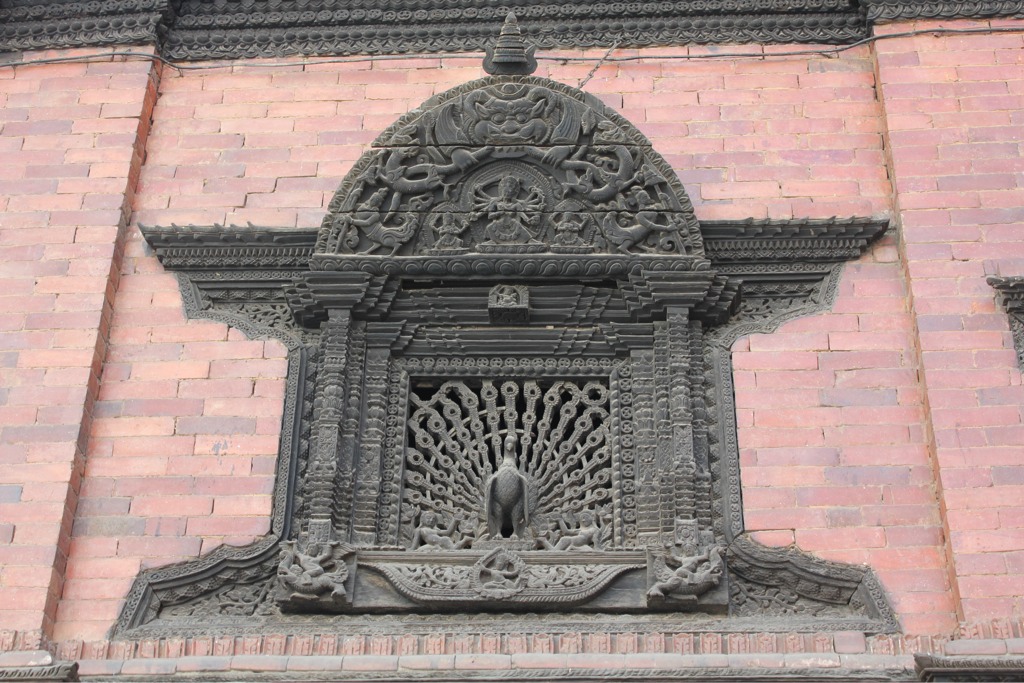
A young girl is selected from a Newari gold and silversmith caste to be the living goddess and lives here with her family until puberty. The selection process is rigorous and ranges from 32 physical trait matches to horoscope alignments to being tested by terrifying masked dancers. Similar to the Dalai Lama, the final test requires her to choose the clothes worn by her predecessor. Upon retirement, she is paid a dowry and returns to mere mortal status. People gather in the courtyard each day and it is considered lucky if she comes to the window for a small while. Though parts of it are reminiscent of superstardom, a la Michael Jackson, we were strangely just right with our timing and allowed to be calmly gazed upon by her right after arriving. No pictures are permitted, but the odd sensation of it all will stay with us.
After this, we spent some time walking and resting on the steps of a nearby tower, absorbing the bustle of the square, mossy rooftops, little salesmen and a traffic safety show being set up nearby. For future reference, do not drive with four people on a motorbike, no laughing and looking backwards, no carrying 25ft long signs and no getting caught under a fiery bus. We have since witnessed all but the last rule broken.


Of course, we managed to sample some more delicious food within our first 36 hours in the country. A very small sweet lassi (yogurt drink) with coconut, golden raisins, and crushed cashews on top was one of the best (and cheapest, at 25 Nepali rupees or approximately 30 cents, USD) we have had yet. The aloo paneer dosas at the Pilgrim Cafe, in back of the bookshop, made up for the grumpiness of the man behind the book counter. While eating here, we met a lovely retired woman from New Caledonia who invited us to trek there with her. Finally, Tongba i.e. Tibetan MILLET BEER, though it tastes barely of beer and is more reminiscent of yeasty sake in the best way. Plus, it comes in a cool metal cup with metal straw that is pinched on the end so no pesky millet works its way up, and hot water is poured over the fermented grain until you say no more. Definitely a good winter time drink. It was enjoyed most at a hole in the wall Newari food place where we met some other long term travelers (on their second year long trip) that we saw on a bus in Istanbul. It seems food and meeting people/conversation are inseparable for us so far...and we like it that way.
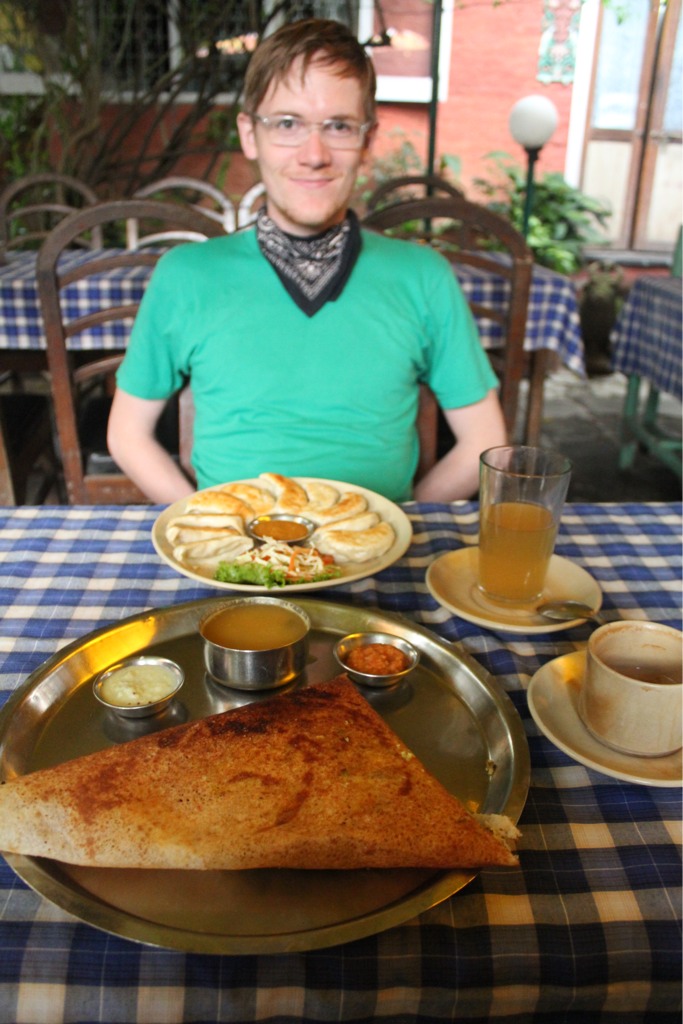

Our 6am bus ride with Pramila, her two children (Dipika and Dependre) and Madelina (a volunteer teaching at the school in Chitwan) would bring us over bumps, through valleys, past terraced rice fields, and deeper into the (very much hotter) jungle lined Terai district, southwest of Kathmandu. The decorated (for safe travels on crazy roads) trucks and buses reminded me of Bolivia. We slept, smiled, bopped and peered at the hilltops and rivers the whole six hours. Next stop, Sitamai Farm.
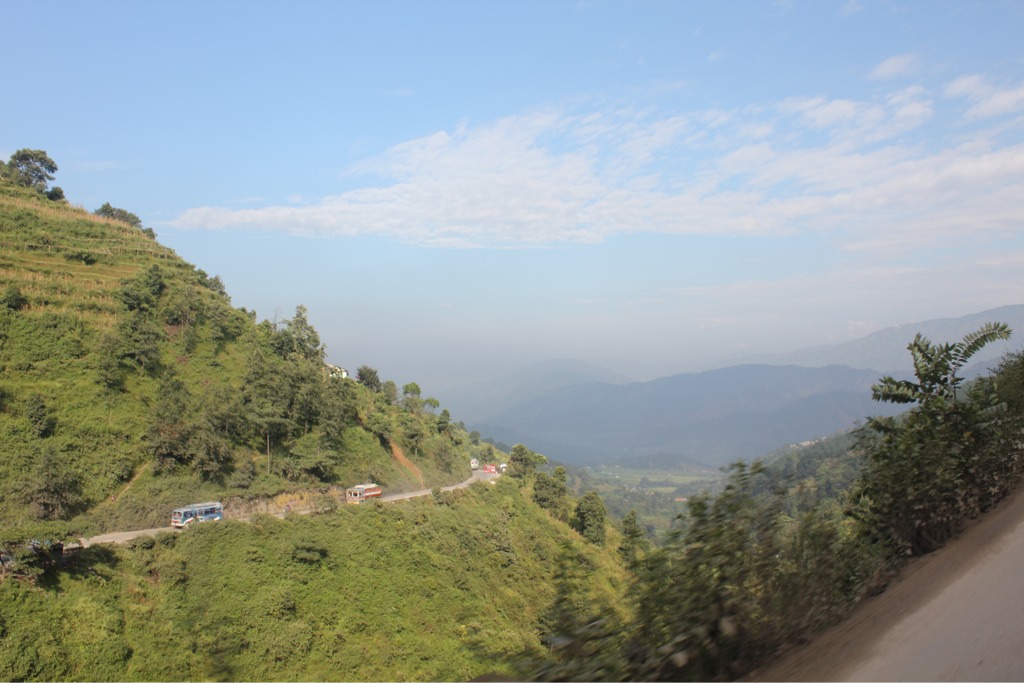
Location:Kathmandu, Nepal






